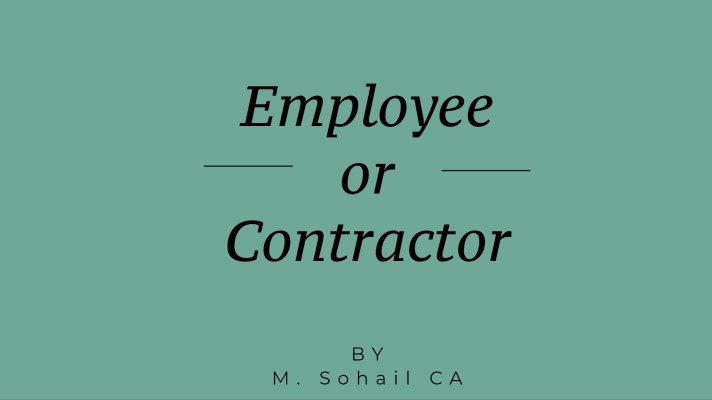
Accountants are often asked about the correct classification of employees and independent contractors for tax and other obligation purposes.
Both have different treatment of tax, accounting and statutory obligations so classifying them correctly is paramount for decision makers.
Some Common myths and misconception regarding independent contractors’ relationship
- If a worker has an ABN they are a contractor and so no other tax and statutory responsibilities for the business. If the ATO concludes the working arrangement is employment so an ABN will not make the worker a contractor.
- Everyone in the industry takes on workers as independent contractor so I can take that too.
The truth we should not fall into common industry practices and work towards correct implementation of legal requirements. - If a business has a registered business name so we can consider them as a contractor. The truth is it does not matter. ATO investigates the totality of the relationship.
Through the lens of accountants, we can explore further about this relationship.
ATO has outlined key factors which can help distinguishing the nature of business relationship with a worker either employee or contractor.
These factors are:
| Factors | Employee | Contractor |
| Control | The business has the total control over the work. For example how the work will be performed, where it will be performed and when it will be performed | The contractor has the ability to complete the work at his own terms. However, it is subject to reasonable direction by the business |
| Ability to subcontract | Worker has no right to delegate his work to someone. The tasks assigned by the business to workers must be performed by themselves. | The contractor can freely choose to delegate the work to someone else and a business will pay him on the completion of task as agreed in the contract. |
| Provision of tools and equipment | Business provides tools and equipment to complete the task | Contractor brings all or most of the tools, equipment, and other items to perform the work. |
| Risk | The worker bears no risk or have little risk. | The contractor bears all commercial risks associated with the performance of the task. |
| Method of payment | Employees are paid on a predetermined rate such as hourly rate. | The contractor usually submits invoices for each completed task or in accordance with the agreement. |
Tax and Super Obligations
Talk to your accountant regarding the correct treatment of tax and super obligations if you are in doubt. However, we have listed some of the points which can be helpful:
- PAYG – businesses pay PAYG to ATO while for contractors, there is no such requirements.
- Superannuation – businesses pay superannuation at least quarterly on wages for eligible employees. For contractors, businesses may still have to pay super if the contract is principally for labour in nature.
- FBT – businesses must report fringe benefit tax for benefits given other than salary to employees. For contractors, businesses do not have any FBT requirements.
The ramifications of getting it wrong
If authorities determine the contractor is found to be an employee, the employer may be required to pay all missed superannuation, PAYG, payroll tax and missed leave entitlements.
Further, the directors can be held personally liable for unpaid PAYG and superannuation under the Director Penalty Regime.
It is never too late. If you are in doubt talk to Konvex accountants regarding your tax and super obligations. Konvex Accountants provides obligation free advice on certain matters including this.



